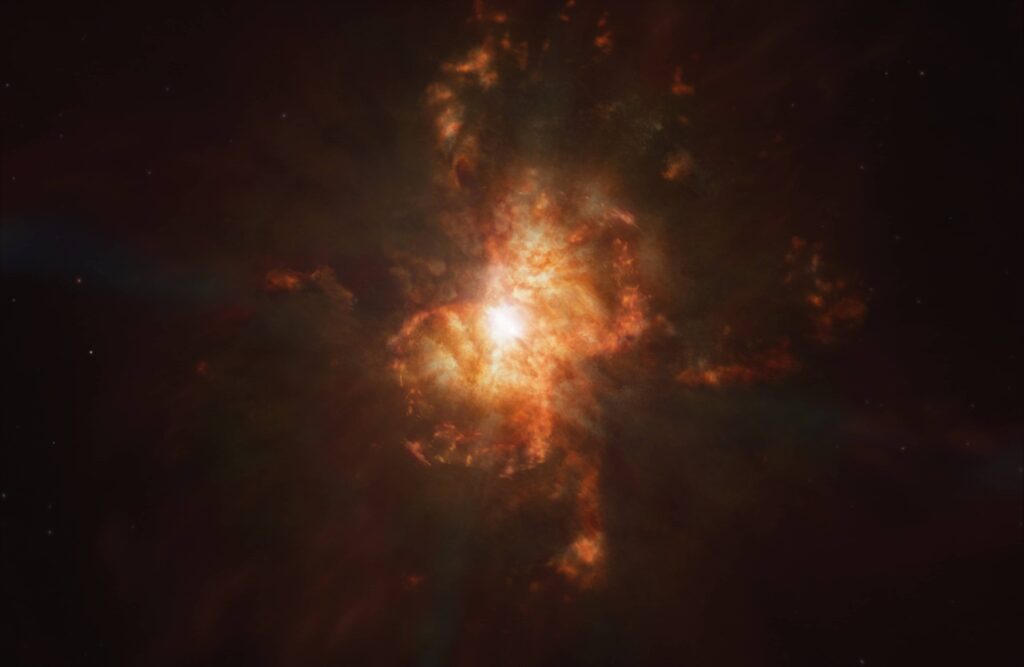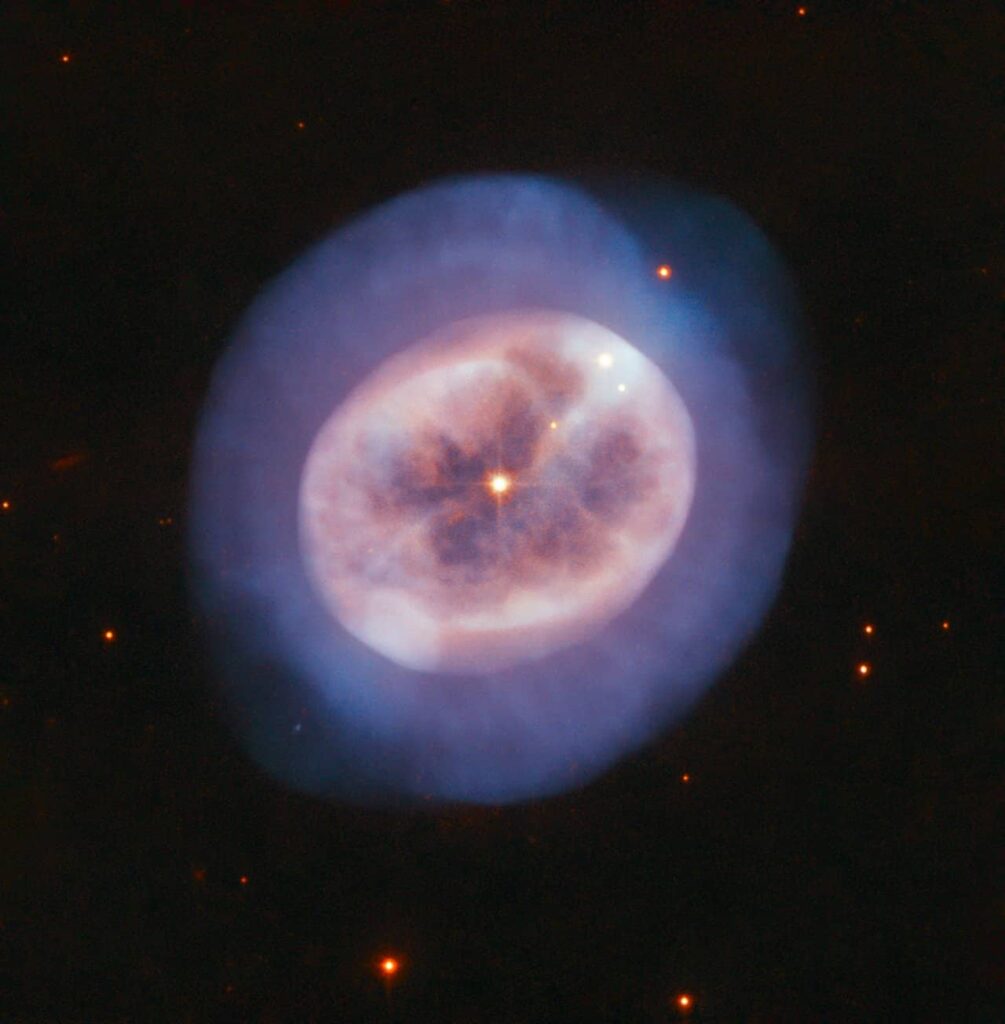In the previous article, we spoke on how stars are born. In this one, we will talk about how do they evolve from a newborn star and then how they eventually die. The death of the stars is not the end as they go on to form Planetary Nebula and White Dwarf. These stars also leave stellar remnants like the Black Hole and Neutron Star which we’ll be discussing about in the future. (if you missed the previous article click here as this article is the continuation to it)
Continuation to the Life Cycle of a Star
4. Mature Star
As the Star has just entered the main sequence (read the previous article on the birth of a star to know more), its temperatures are about 10 million Kelvin (or 107 K) which is the minimum temperature required for hydrogen to fuse with helium. As at this temperature, the hydrogen nuclei (or protons) have enough speed to overcome the electromagnetic repulsion between them as helium nuclei carry a greater positive charge, and their electromagnetic repulsion is higher.

Now the temperature at the core is too low for helium fusion, due to which the hydrogen there begins to deplete and the nuclear reactions eventually subside. As a result, the location of the burning moves to the higher layers of the core leading the inner core of non-burning pure helium to glow. However, without nuclear burning to maintain it, the outward pushing gas pressure weakens in the inner helium core, but the inward gravitational pull does not change. As soon as hydrogen becomes substantially depleted, about 10 billion years after the stars enters the main sequence, the helium core begins to contract.

The shrinking helium core starts to release gravitational energy, increasing the central temperature of the star, leading the overlying layers to heat up and causing the hydrogen in there to fuse even more rapidly than before. Due to this, the hydrogen shell generates energy faster than it did in the main sequence and the shell’s energy production increases continuously as the helium core contracts. A strange noticed is that even though the disappearance of the nuclear fire at its center, star begins to get brighter.

The pressure exerted by the hydrogen burning causes the star’s non-burning outer layers to increase in radius. Not even gravity can stop them. Even as the core heats up and shrinks, the overlying layers continue to cool and expand. The star, now aged and unbalanced, is on its way to becoming a red giant. This change from a main sequence star to a red giant takes about 100 million years.
The simultaneous contraction of the red giant’s core and expansion of its non-burning layers surrounding the core doesn’t continue forever. A few hundred million years, after the star leaves the main sequence, the central temperature reaches 100 million Kelvin (or 108 K) needed for helium to fuse into carbon, the nuclear fires reignite. Once the burning starts, the core cannot respond fast enough to the rapidly changing conditions within it and the temperatures sharply rises in a runaway explosion called helium flash.

Eventually, the star’s core expands, its density drops and the outward gas pressure push and inward gravity pull comes under a balanced equilibrium. The now stable core, begins to burn helium into carbon at temperatures well above 100 million Kelvin (or 108 K). As helium fuses to become carbon, a new carbon-rich inner core begins to form and a similar phenomenon to the build-up of helium core occurs. Now the helium that the helium has depleted, the fusion has ceased. The non-burning carbon core continues to shrink in size (even as mass increases due to helium fusion) and heats up as gravity pulls it inward, causing the hydrogen and helium burning rates in the overlying layers to increase.
The star now has a contracting carbon inner core surrounded by a burning helium shell, which in turn is surrounded by a hydrogen-burning shell. The outer envelope of the star expands, much as it did in the first red giant stage. Thus, becoming a swollen red giant once again, but the burning rates in the outer shells are fiercer as compared to the first time. In addition, the radius and luminosity are higher as compared to the first red giant and as the carbon core continues to shrink, the outer helium and hydrogen burning shells attain higher and higher temperatures and luminosities.

5. Planetary Nebula & White Dwarf
The aging star has now reached its predicament. As its carbon core is practically dead, while the outer helium and hydrogen burning shells consume fuel at an increasing and furious rate. As it expands, cools and reascends, the star begins to fall apart. As the intense radiation starts coming from within, the outer shells slowly begin to drift away into interstellar space. Slowly at first, then more rapidly as the luminosity of the core increases, the star loses its entire outer shells or envelopes in less than a million year.

The star, a former red giant now consists of two distinct parts: the exposed inner core and the escaping outer shell or envelope. As the core exhausts its last remaining fuel, it contracts and heats up. Eventually, it becomes so hot that its ultraviolet radiation ionizes the inner parts of the surrounding cloud, producing a spectacular display called a Planetary Nebula. In addition, the core becomes the White Dwarf shining only by the stored heat, not by nuclear reactions. This object has a white-hot surface when it first becomes visible, although it appears dim because of its small size.

Theese stars also leave stellar remnants like the Black Hole and Neutron Stars which we’ll be discussing about in the future. So please do look forward to it. (Click Here)




[…] and death of a star (If not, Read the previous articles on Stellar Evolution Birth of a Star and Death of a Star). As we already know that stars die, but as they do so, they leave behind remnants, usually compact […]
[…] Tune in next week to learn more on how do stars die (Click Here) […]